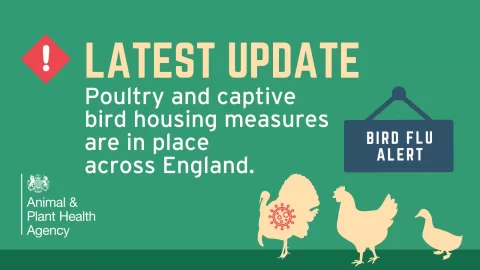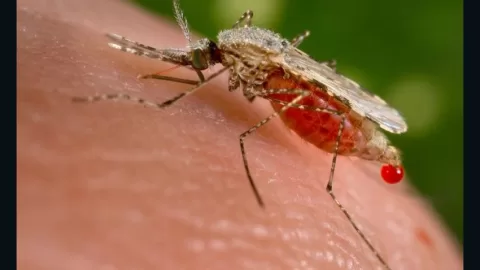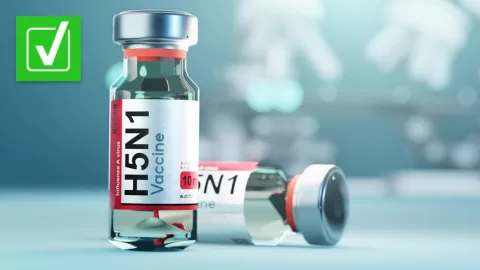OXA-204 Carbapenemase has emerged as a critical concern in the landscape of antibiotic resistance, particularly in the case of *Pseudomonas guariconensis* isolates in Tunisia. This enzyme significantly contributes to carbapenem resistance, rendering these multidrug-resistant bacteria difficult to treat and posing serious risks to patient health. The identification of *bla OXA-204* on a chromosomally integrated plasmid fragment illustrates the complex mechanisms behind the spread of resistance. As clinicians and researchers grapple with rising infection rates, effective antimicrobial stewardship becomes essential to contain these resilient pathogens. Increasing awareness and surveillance of such clinical isolates can help in devising targeted interventions to manage infections caused by these formidable bacteria.
The alarming rise of OXA-204-producing pathogens reflects a broader challenge in combating antibiotic resistance in healthcare settings. Notably, *Pseudomonas guariconensis*, a lesser-known but potent clinical isolate, showcases the potential for versatility in resistance mechanisms. The ongoing battle against drug-resistant infections is underscored by the urgent need for refined diagnostic tools and robust treatment protocols. This escalating issue emphasizes the importance of antimicrobial stewardship programs to mitigate the spread of multidrug-resistant strains. By focusing on effective monitoring and responsible prescribing practices, healthcare professionals can better manage the threats posed by such formidable organisms.
Understanding OXA-204 Carbapenemase and Its Impact
The emergence of OXA-204 – a subclass of OXA-48 carbapenemases – has become a growing concern in the clinical management of infections caused by multidrug-resistant bacteria, particularly *Pseudomonas guariconensis*. As a significant resistance mechanism, OXA-204 production can render standard treatment options ineffective, especially in severe infections often seen in high-risk patients such as those with extensive burn injuries. Understanding the molecular basis and implications of this resistance gene is critical for developing effective treatment strategies.
In Tunisia, the identification of OXA-204 in *Pseudomonas guariconensis* illustrates a wider trend of carbapenem resistance spreading to non-*Enterobacterales* species. This highlights the necessity for clinicians to stay vigilant and incorporate advanced surveillance methods alongside routine diagnostics to rapidly identify such resistant organisms in clinical settings. Additionally, the presence of other resistance genes on integrated plasmids suggests a complex genetic landscape that complicates treatment regimens and necessitates novel approaches to antimicrobial stewardship.
The Role of Pseudomonas guariconensis in Healthcare
*Pseudomonas guariconensis* has steadily gained attention in clinical microbiology due to its ability to cause serious infections, especially in immunocompromised patients. Originally isolated from soil, this organism is now being recognized in various clinical isolates, often alongside other multidrug-resistant bacteria. The clinical manifestations associated with *P. guariconensis* range from urinary tract infections to more severe conditions such as necrotizing fasciitis, further complicating the treatment landscape for healthcare providers.
The aforementioned case of an 8-year-old burn patient emphasizes the pressing need for antimicrobial stewardship, particularly in settings susceptible to infections caused by *P. guariconensis*. With its growing presence in clinical environments, especially within intensive care units treating burn victims, proactive measures in infection control and tailored antibiotic management strategies are paramount. This not only mitigates patient risks but also contributes to the overall effort against the rising tide of antibiotic resistance.
Multidrug Resistance in Pseudomonas Species
The challenge of multidrug-resistant (MDR) infections caused by *Pseudomonas spp.* is escalating, with *Pseudomonas guariconensis* exemplifying the complexity of treating such pathogens. In many cases, these bacteria express resistance mechanisms that implicate various antibiotic classes, making infections difficult to manage effectively. The genetic determinants contributing to resistance, such as the presence of carbapenemases like OXA-204, make it essential for healthcare systems to prioritize the identification and control of these organisms.
Furthermore, the co-occurrence of multiple resistance genes increases the likelihood of treatment failure, necessitating the use of complex antibiotic regimens that may involve combination therapies. Clinicians must remain informed about the local epidemiology of multidrug-resistant *Pseudomonas species* in order to formulate effective empirical treatment policies and implement evidence-based stewardship practices that proactively combat the spread of these resistant strains.
Antimicrobial Stewardship: A Necessity in Combatting Infections
Antimicrobial stewardship is an essential framework aimed at optimizing the treatment of infections while simultaneously mitigating the further development of antibiotic resistance. In the context of infections caused by *Pseudomonas guariconensis* and other MDR organisms, effective stewardship requires a collaborative approach amongst healthcare providers to ensure appropriate antibiotic use. This includes ongoing education about resistance patterns, prompt diagnostic testing, and tailoring therapy based on susceptibility results.
In Tunisia, where the emergence of OXA-204-producing strains poses a significant threat to patient care, antimicrobial stewardship initiatives are crucial. These programs should focus on surveillance, infection prevention, and controlled administration of antimicrobials, particularly carbapenems, to preserve their efficacy against resistant pathogens. By implementing structured stewardship practices, healthcare institutions can significantly improve patient outcomes while decreasing the prevalence of infections caused by resistant organisms.
Challenges in Diagnosing Carbapenem Resistance
Diagnosing carbapenem-resistant pathogens, including those producing OXA-204, poses unique challenges for clinicians and microbiologists alike. Traditional culture methods may take time, delaying necessary treatment for critically ill patients. Rapid diagnostic tests are essential to identify resistance mechanisms swiftly, allowing for appropriate therapy adjustments that can improve patient outcomes in severe infections.
Incorporating advanced molecular techniques such as whole-genome sequencing can elucidate the resistance profiles of clinical isolates, streamlining the diagnosis of complex multidrug-resistant infections. As the landscape of bacterial resistance continues to evolve, enhancing diagnostic capabilities is vital in managing infections caused by *Pseudomonas guariconensis* and similar resistant organisms effectively.
The Global Spread of OXA-204 and Its Implications
The global dissemination of OXA-204 carbapenemase raises alarms about the potential threats posed by resistant strains of *Pseudomonas guariconensis*. As this resistance gene continues to emerge in various geographical regions, healthcare systems worldwide must prepare for the possible implications on public health. This highlights the interconnectivity of global healthcare practices and the necessity for coordinated surveillance efforts to track the spread of resistance genes.
Understanding and addressing the factors contributing to the spread of OXA-204 resistance involves not only local but also international collaboration amongst researchers, health professionals, and policymakers. Development of global initiatives aimed at monitoring antimicrobial resistance and promoting best practices plays a key role in curtailing the further spread of resistant organisms, ensuring safer healthcare outcomes globally.
Conclusion: Awareness and Action Against OXA-204
In conclusion, the identification of OXA-204 carbapenemase in *Pseudomonas guariconensis* necessitates immediate awareness and action from healthcare providers. As the threat of multidrug-resistant infections escalates, prompt recognition and understanding of these resistance mechanisms are vital in curbing their impact on patient health. Continuous education and vigilance are necessary to stay ahead in the war against resistant pathogens.
Furthermore, fostering a culture of antimicrobial stewardship within healthcare settings is imperative for preserving the effectiveness of currently available antibiotics. Awareness of evolving resistance patterns, combined with strategic interventions, can significantly enhance patient care and combat the rise of antimicrobial resistance effectively.
Emerging Strategies to Manage Pseudomonas Infections
The rise of multidrug-resistant bacterial strains, including *Pseudomonas guariconensis*, has prompted the scientific community to explore novel strategies to manage infections effectively. Researchers are currently investigating alternative therapeutic avenues, including the use of combination antimicrobial treatments and novel agents such as bacteriophage therapy. These innovative methods may provide additional tools to combat infections caused by resistant pathogens.
In addition, ongoing research into the mechanisms of resistance and the role of biofilms in infection persistence is crucial. Understanding these factors can inform the development of targeted therapies and adjunctive treatment strategies that could enhance the efficacy of existing antibiotics. By embracing a multi-faceted approach, the healthcare community can better equip itself to handle the challenges posed by resistant *Pseudomonas* species.
The Importance of Surveillance in Infectious Disease Control
Effective surveillance plays a pivotal role in controlling infections caused by OXA-204–producing *Pseudomonas guariconensis*. This includes monitoring resistance patterns in local and regional healthcare settings to facilitate timely interventions and treatment modifications. Surveillance systems can aid in tracking the emergence and spread of multidrug-resistant organisms, ultimately improving patient outcomes through informed clinical decisions.
Furthermore, implementing robust surveillance measures helps in understanding the dynamics of resistance dissemination among populations. By accurately identifying trends and transmission pathways related to OXA-204 and its associated resistance genes, healthcare organizations can devise strategic responses aimed at mitigating infections while promoting antimicrobial stewardship initiatives.
Frequently Asked Questions
What is OXA-204 Carbapenemase and its significance in clinical isolates?
OXA-204 Carbapenemase is an enzyme produced by certain bacteria that confers resistance to carbapenem antibiotics. Its detection in clinical isolates, such as *Pseudomonas guariconensis*, is significant as it indicates the spread of resistance mechanisms beyond traditional *Enterobacterales*, posing challenges for treatment and infection control.
How does Pseudomonas guariconensis develop resistance through OXA-204 Carbapenemase?
*Pseudomonas guariconensis* develops resistance to carbapenems via the production of OXA-204 Carbapenemase. This enzyme breaks down carbapenem antibiotics, rendering them ineffective. The genetic basis for this resistance often includes the *bla OXA-204* gene located on plasmids within the bacterial chromosome.
What role does antimicrobial stewardship play in managing OXA-204 Carbapenemase infections?
Antimicrobial stewardship is crucial in managing infections caused by OXA-204 Carbapenemase-producing bacteria, like *Pseudomonas guariconensis*. It involves careful monitoring and responsible use of antibiotics to minimize resistance development, enhance therapeutic effectiveness, and prevent the spread of multidrug-resistant bacteria.
What are the clinical implications of OXA-204 Carbapenemase detection in *Pseudomonas guariconensis*?
The detection of OXA-204 Carbapenemase in *Pseudomonas guariconensis* has serious clinical implications, including increased difficulty in treating infections, higher mortality rates, and the necessity for targeted therapy options. It highlights the need for rapid diagnostic methods and robust surveillance systems to manage carbapenem resistance effectively.
What treatments are effective against OXA-204 Carbapenemase-producing *Pseudomonas guariconensis*?
Treatments effective against OXA-204 Carbapenemase-producing *Pseudomonas guariconensis* may include newer beta-lactam combinations such as ceftazidime/avibactam and cefiderocol, as well as older antibiotics like colistin, which, despite resistance, may still show activity in specific cases.
How common is OXA-204 Carbapenemase in clinical settings involving multidrug-resistant bacteria?
OXA-204 Carbapenemase is becoming increasingly common in clinical settings as part of the broader rise in multidrug-resistant bacteria. Its emergence, particularly in isolates like *Pseudomonas guariconensis*, raises significant concerns for public health, especially in environments with high antibiotic use.
Why is ongoing surveillance important for OXA-204 Carbapenemase in *Pseudomonas guariconensis*?
Ongoing surveillance for OXA-204 Carbapenemase in *Pseudomonas guariconensis* is vital to track resistance trends, inform treatment protocols, and curb the spread of multidrug-resistant pathogens. It allows healthcare systems to adapt strategies and implement necessary preventive measures to protect patient populations.
What are the potential sources of *Pseudomonas guariconensis* in clinical environments?
*Pseudomonas guariconensis* can originate from various sources in clinical environments, including contaminated medical equipment, wounds from patients suffering severe burns, and the environment, as seen in its initial isolation from rhizospheric soils. These factors contribute to its ability to cause infections in immunocompromised patients.
| Key Points | Details |
|---|---|
| Emergence of OXA-204 Carbapenemase | The study reports the first clinical isolate of OXA-204 producing *Pseudomonas guariconensis* in Tunisia, indicating the spread of OXA-48 variants. |
| Clinical Background | An 8-year-old patient with severe burns developed complications leading to the isolation of this new carbapenemase in clinical settings. |
| Resistance Mechanisms | The *bla OXA-204* gene was discovered on a 119-kb chromosomally integrated plasmid fragment, alongside other resistance genes, highlighting the complexity of antibiotic resistance. |
| Clinical Implications | The presence of this resistome contributes to the multidrug resistance observed in this pathogen, demonstrating urgent clinical concerns. |
| Need for Surveillance | The findings emphasize the necessity for enhanced surveillance, diagnostic tools, and antimicrobial stewardship in combating carbapenem-resistant infections. |
Summary
OXA-204 Carbapenemase is emerging as a serious concern within clinical isolates of *Pseudomonas guariconensis*, particularly noted in a patient from Tunisia. The discovery of this resistant variant on a plasmid fragment suggests a growing challenge in treating infections caused by multidrug-resistant organisms. Continuous monitoring, rapid diagnostics, and effective antimicrobial strategies become increasingly crucial to curb the spread of such high-level resistances in healthcare settings.
The content provided on this blog (e.g., symptom descriptions, health tips, or general advice) is for informational purposes only and is not a substitute for professional medical advice, diagnosis, or treatment. Always seek the guidance of your physician or other qualified healthcare provider with any questions you may have regarding a medical condition. Never disregard professional medical advice or delay seeking it because of something you have read on this website. If you believe you may have a medical emergency, call your doctor or emergency services immediately. Reliance on any information provided by this blog is solely at your own risk.








